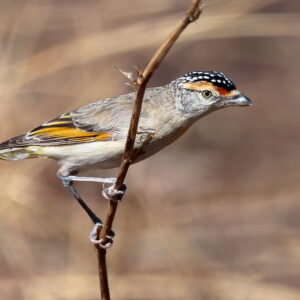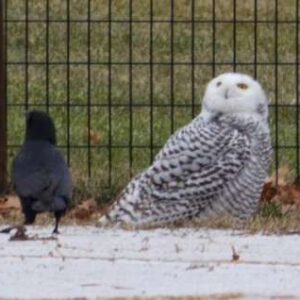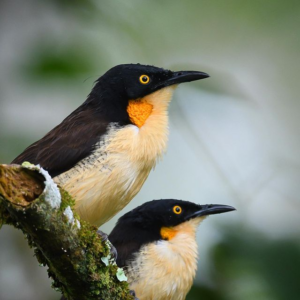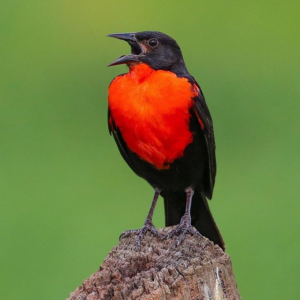This diminutive hummingbird is characterized by its noticeably curved bill. The adult male displays a predominantly glistening green plumage, highlighted by a coppery crown and strikingly bright white outer tail feathers.
Meet the Coppery-headed Emerald:
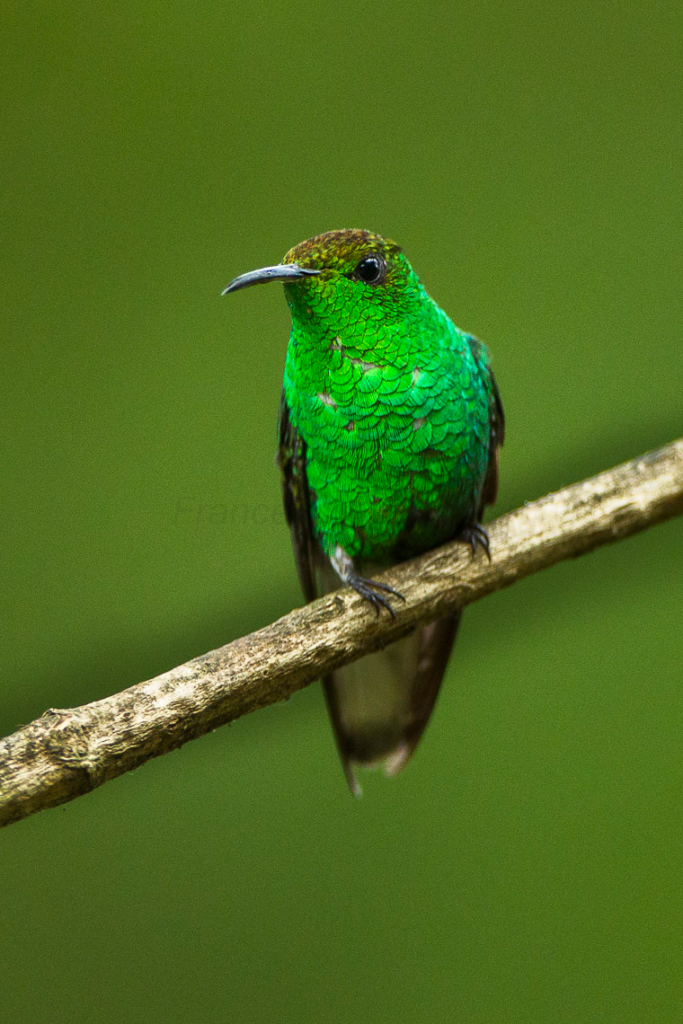
“File:Coppery-headed Emerald – La Corora – Costa Rica S4E1630 (26663680986).jpg” by Francesco Veronesi from Italy is licensed under CC BY-SA 2.0.
The coppery-headed emerald (Microchera cupreiceps) is a petite hummingbird belonging to the “emeralds” within the tribe Trochilini, found in the subfamily Trochilinae. The coppery-headed emerald measures approximately 7.5 cm (3.0 in) in length and weighs around 3.0 to 3.3 g (0.11 to 0.12 oz). Both males and females possess a slightly curved bill with a pinkish base. In adult males, you’ll find a muted coppery bronze crown, along with bronze-green nape, back, and rump. Their uppertail coverts shine in bright coppery bronze. The central pair of tail feathers is bronze, followed by the next three pairs, which are white with pale gray tips. The outermost pair features white feathers with black tips. Their underparts are a vibrant yellowish metallic green with white undertail coverts. Males residing in the far northern Cordillera de Guanacaste may also sport a purple spot in the center of their breast.

“Coppery Headed Emerald Female” by ChrisHodgesUK is licensed under CC BY-SA 3.0.
On the other hand, adult females exhibit metallic green upperparts with somewhat coppery bronze uppertail coverts. Their central pair of tail feathers is bright bronze, followed by the next three pairs, which are white with a gray or dusky bar near the end. The outermost pair features white feathers with gray or dusky tips. Their underparts are dull white to grayish white, becoming white in the vent area. Additionally, metallic green spots can be found along the flanks.
Immature males resemble adults but have a duller appearance and black tips on all tail feathers except the central pair.
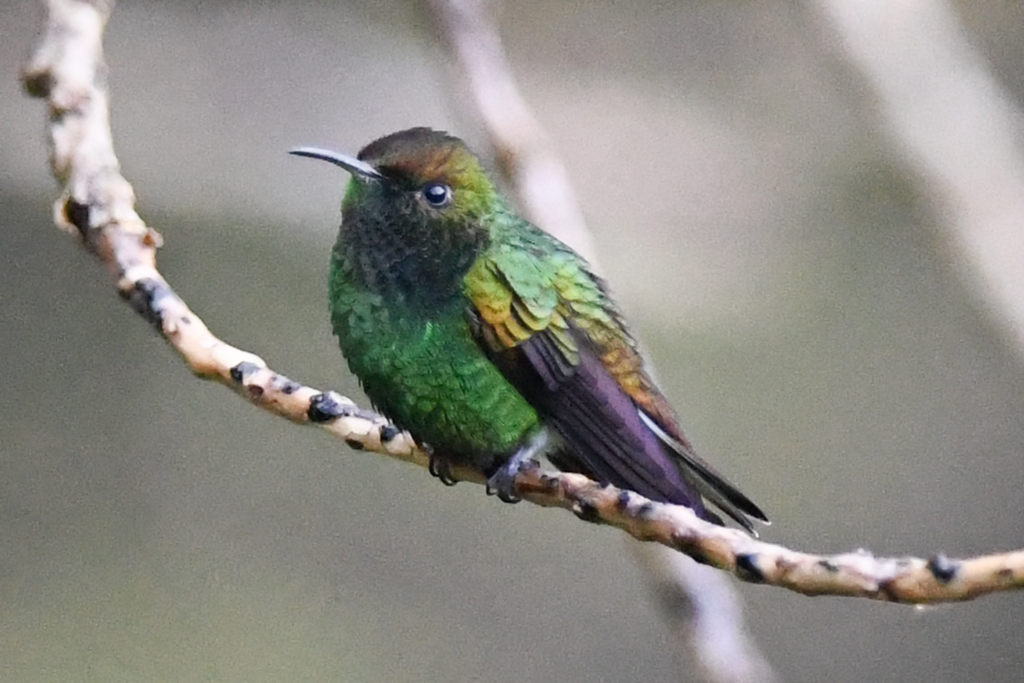
“coppery-headed emerald” by Chloe and Trevor Van Loon is licensed under CC BY 4.0.
The coppery-headed emerald can be found in the highlands of northern and central Costa Rica. It primarily resides on the Caribbean slope, with a presence in the far north on the Pacific slope as well.
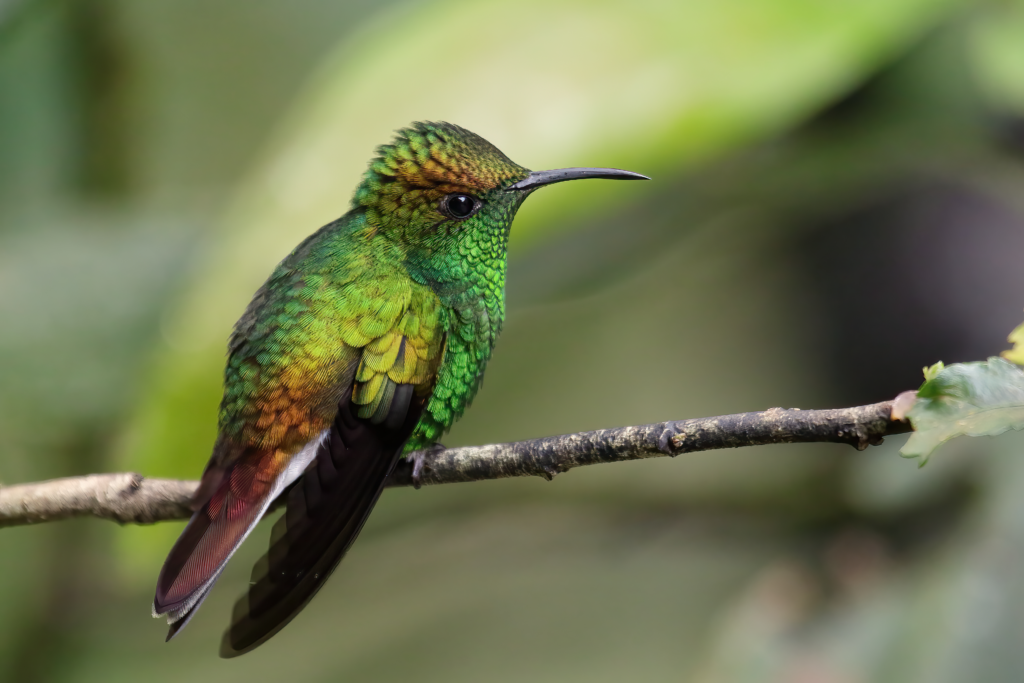
“File:Elvira cupreiceps Santa Elena 2.JPG” by Cephas is licensed under CC BY-SA 4.0.
These emeralds inhabit the edges and interior of moist to humid montane forests. In the forest interior, males are often found in the canopy, while females prefer the understory. However, both sexes can be found at all levels near the edges and in semi-open areas like clearings. Their elevation range spans from 300 to 1,500 m (980 to 4,900 ft) on the Caribbean slope, but they are rarely spotted below about 1,200 m (3,900 ft) on the Pacific side.
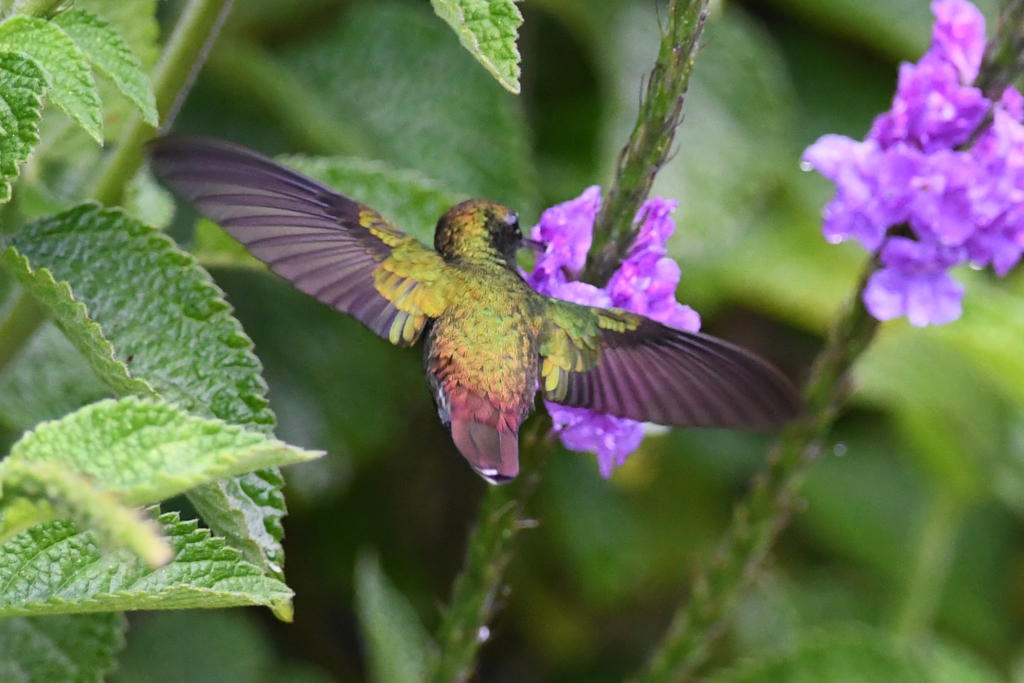
“coppery-headed emerald” by Chloe and Trevor Van Loon is licensed under CC BY 4.0.
Feeding: Foraging primarily for nectar, the coppery-headed emerald visits a wide variety of flowering plants, shrubs, and trees. Some examples include genera like Besleria, Cavendishia, Clusia, Guarea, Pithecellobium, Quararibea, Satyria, and Inga. Apart from nectar, they also glean small arthropods from foliage and capture them by hawking from a perch.
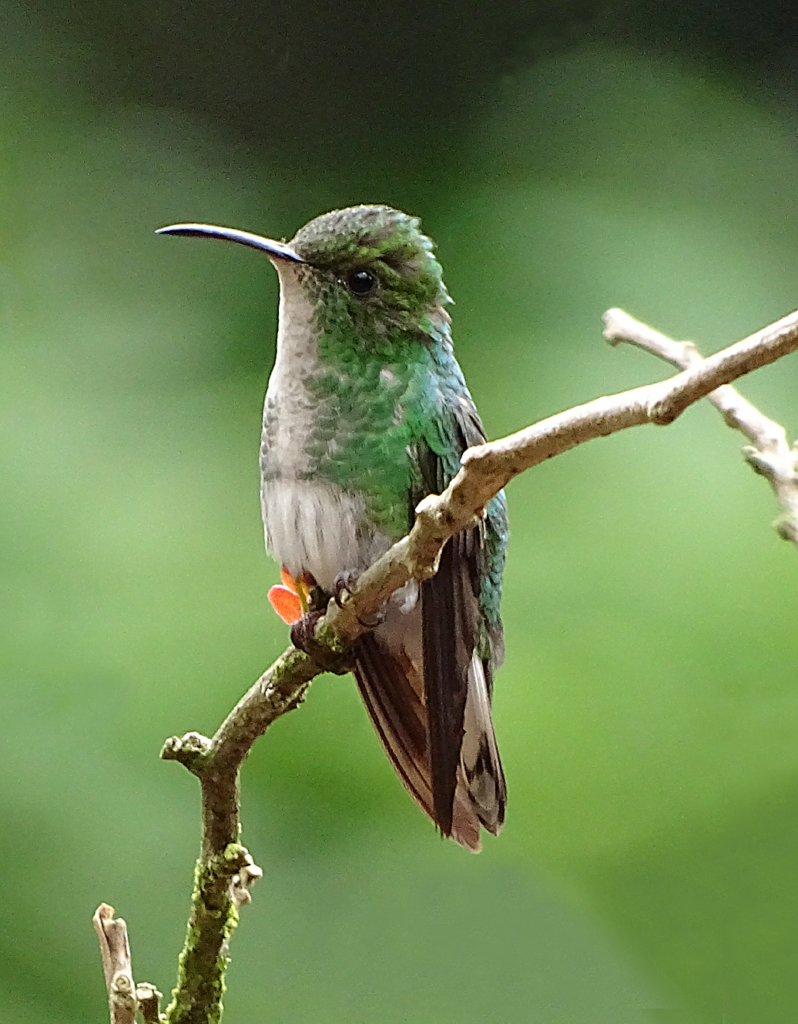
“coppery-headed emerald” by noverholtz is licensed under CC BY-SA 4.0.
Breeding: The breeding season for the coppery-headed emerald spans from October to March and may exhibit variations within that timeframe from year to year. Males court females at leks in small groups. They sing from a perch and chase other males. Females construct a small cup nest using plant down and tree fern scales, bound together with spiderweb, along with some moss and lichen on the outside. These nests are typically situated between 1 and 3 m (3 and 10 ft) above the ground, either in the understory or along an edge. A typical clutch size consists of two eggs, although the incubation period and time to fledging are currently unknown.
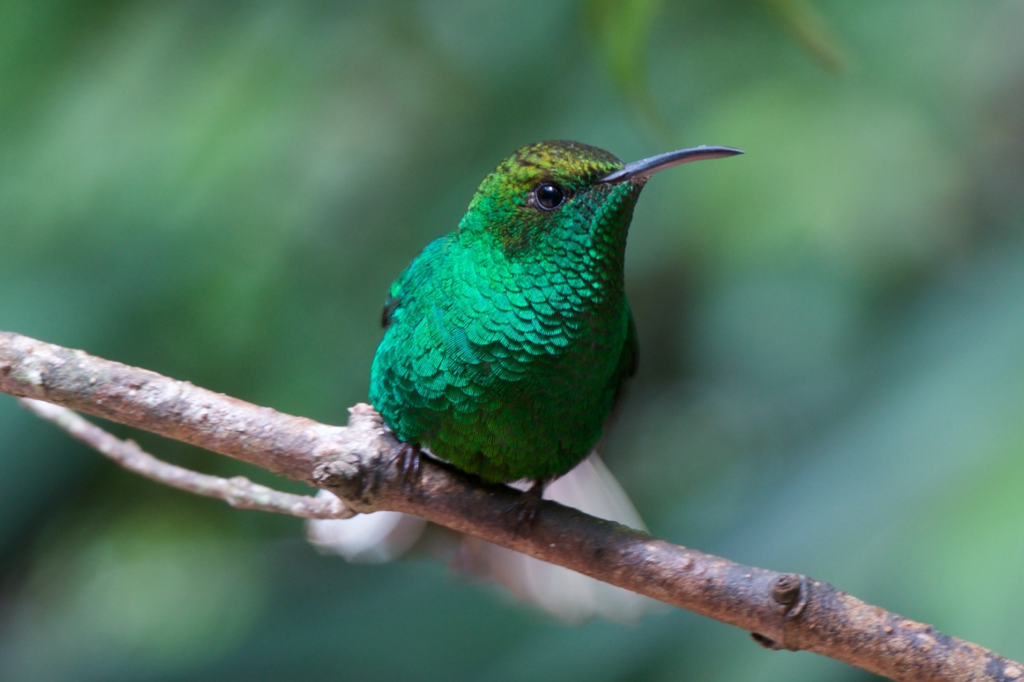
“coppery-headed emerald” by Jonathan Eisen is licensed under CC BY 4.0.
Status The IUCN has classified the coppery-headed emerald as “Least Concern.” It boasts an estimated population of at least 20,000 mature individuals, and its numbers remain stable. No immediate threats have been identified, and it is considered fairly common, residing in many protected areas.
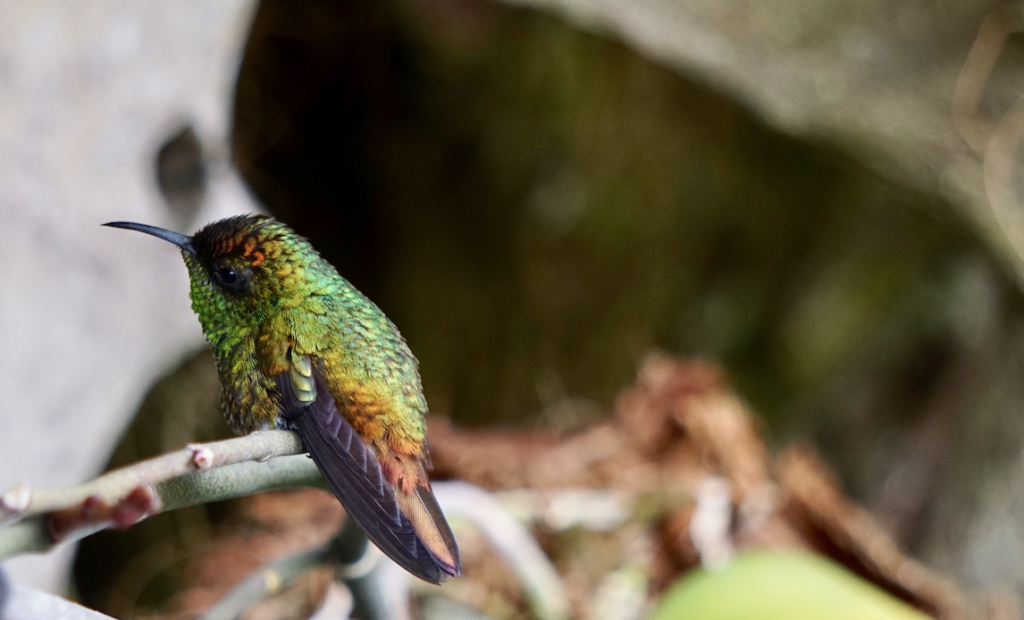
“coppery-headed emerald” by Karen and Mike is licensed under CC BY 4.0.
Watch this bird in action:
